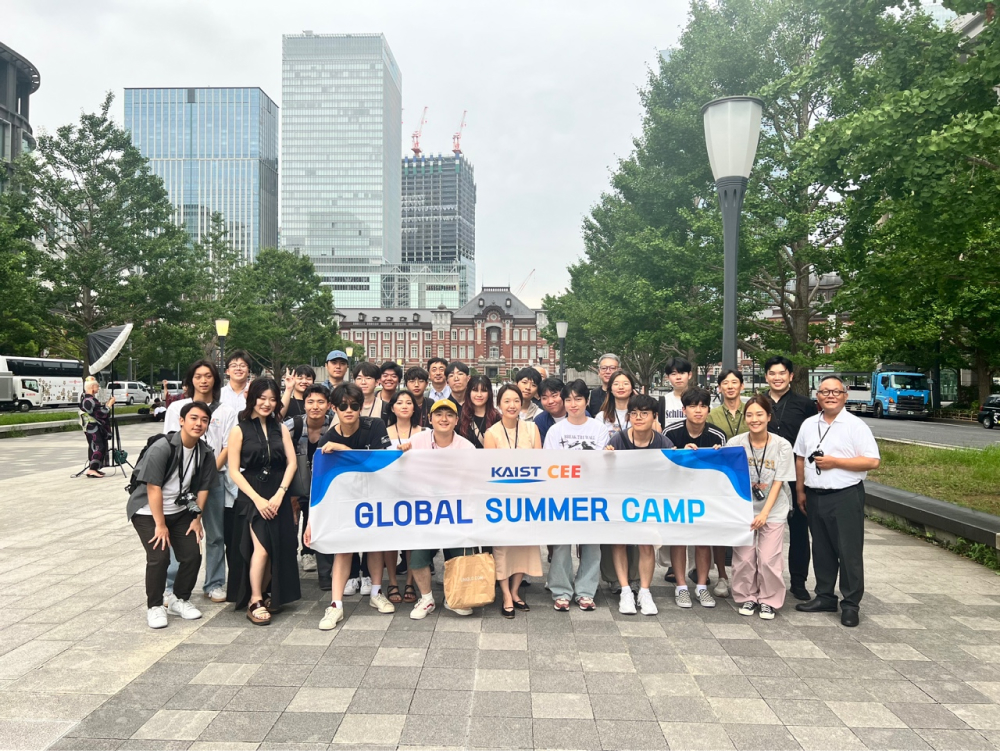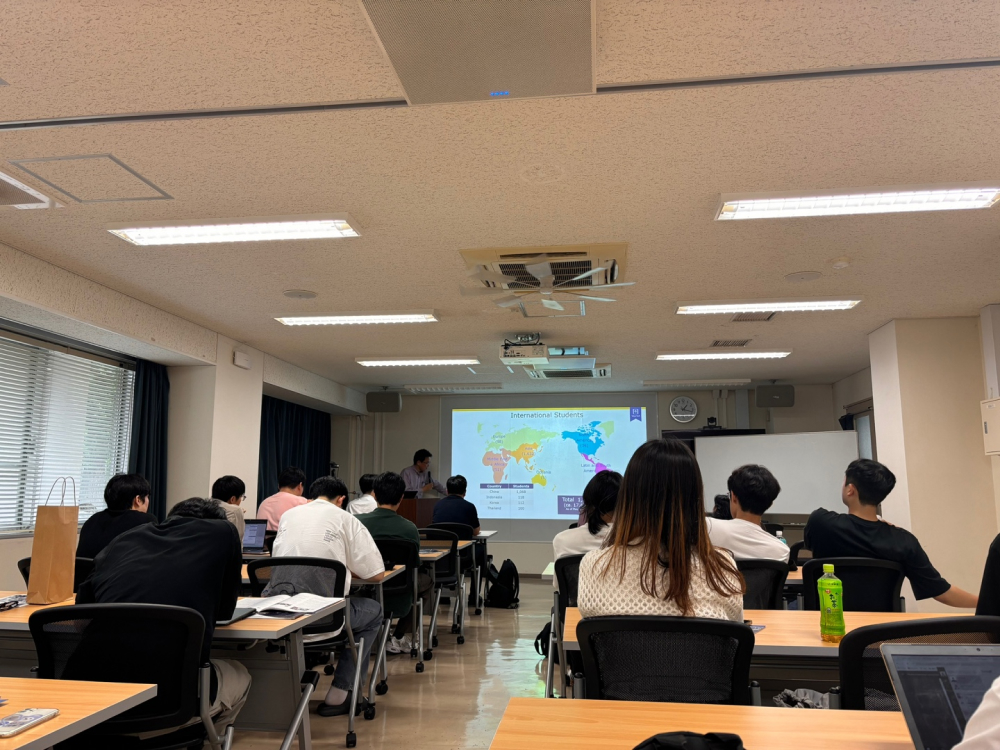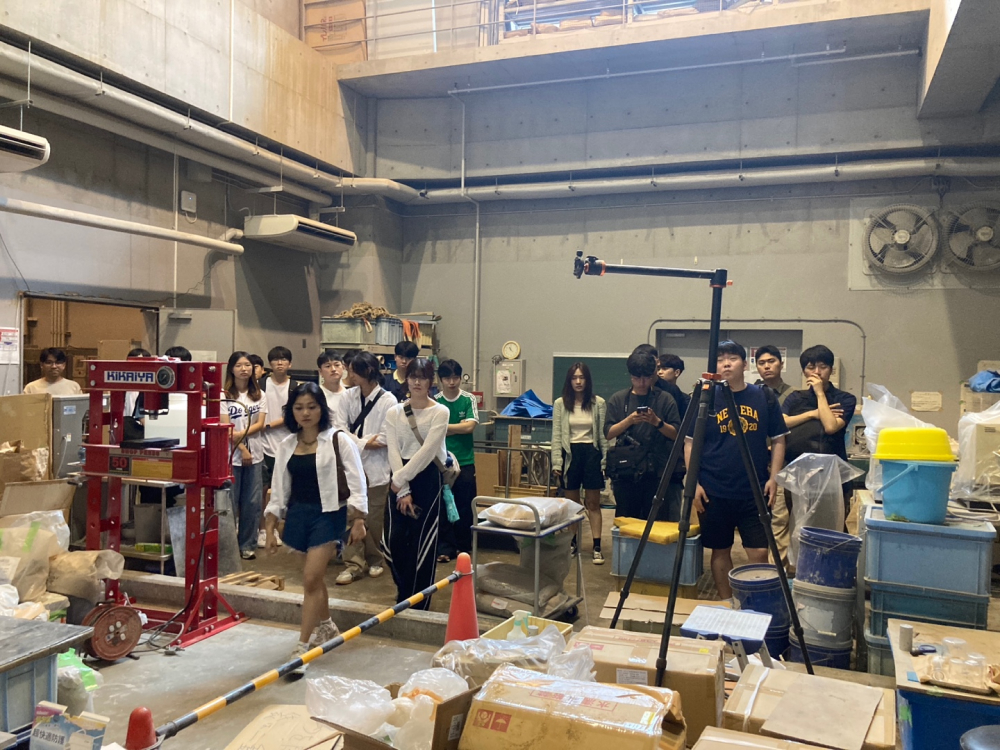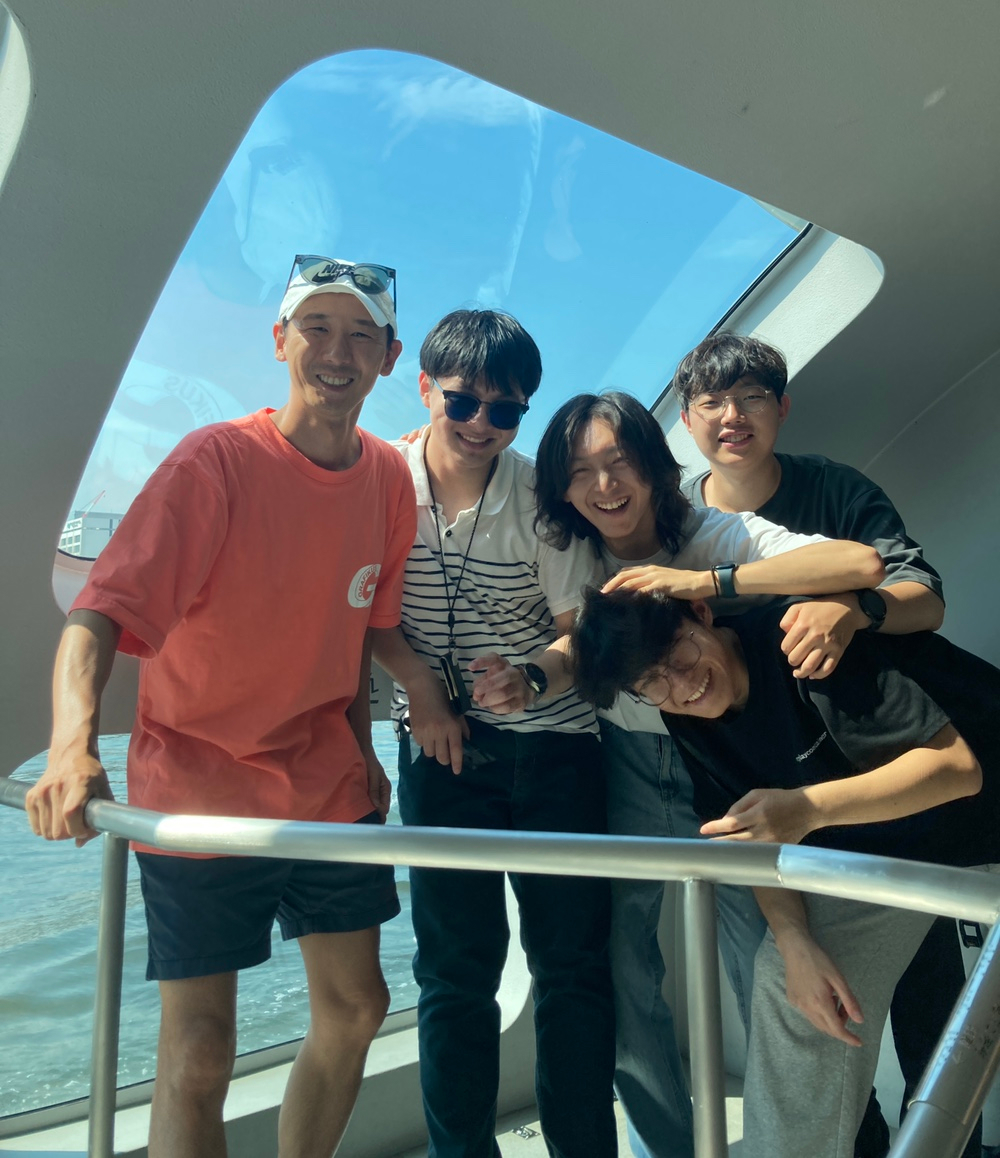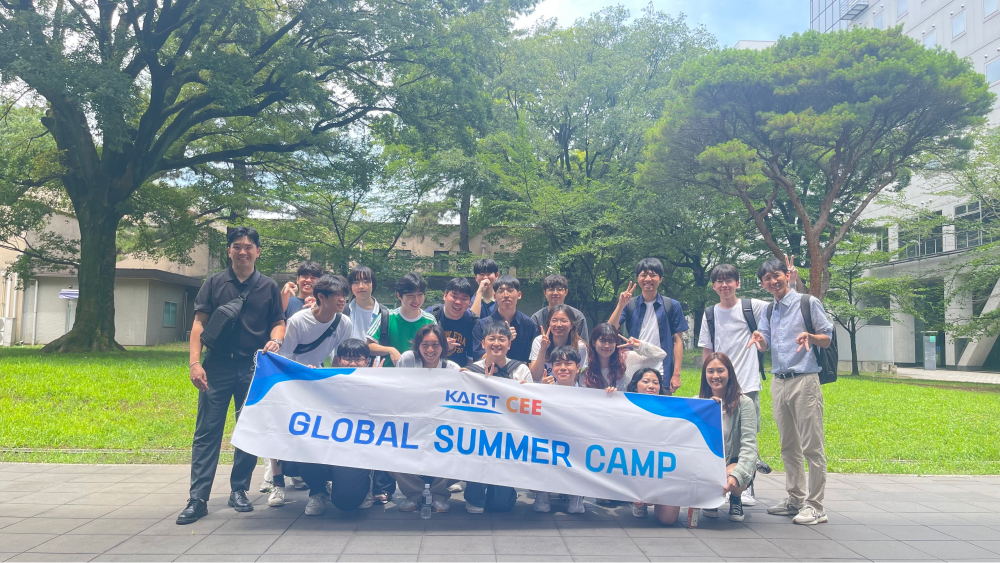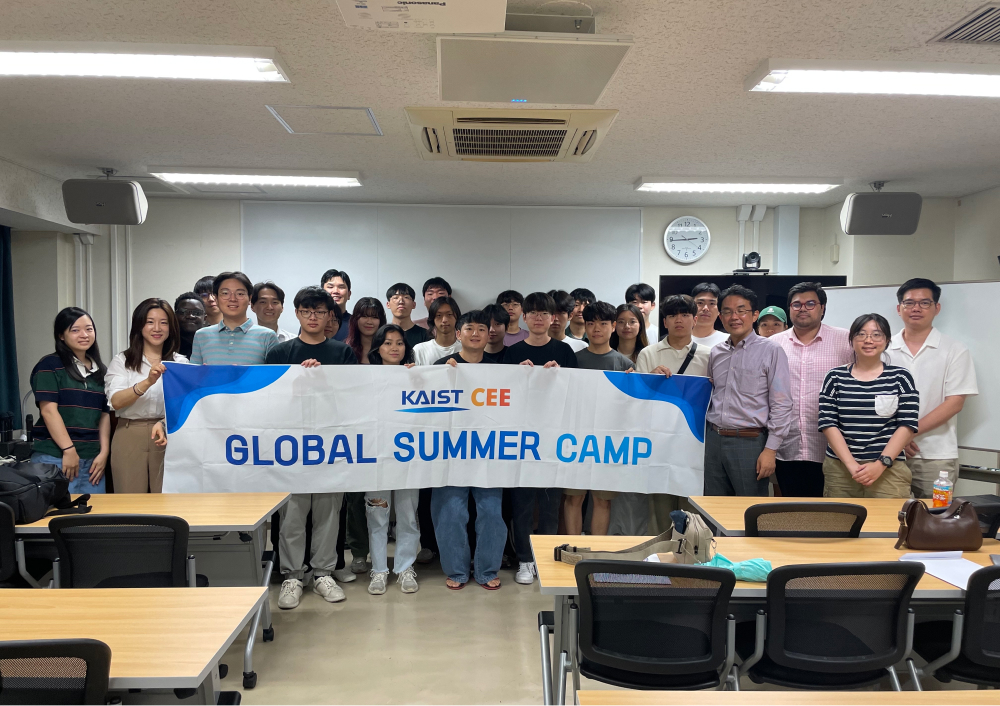SMART CITY
SMART INNOVATION
WEBZINE2024 Vol.07, No.2
Featured
CEE Global Summer Camp 2024
Civil and Environmental Engineering Department, Aow Si Li Sara (Julia)
-
- In the midst of the hot and humid summer when cicadas buzz lively and birds hum melodiously, members of the Civil and Environmental Engineering department flew across the sea to Tokyo, Japan for the 2024 CEE Global Summer Camp (CGSC). Held from July 7 to July 12, the camp took 16 undergraduate students, 3 graduate students, and 4 professors from the department to the various architectural and structural marvels that Tokyo had to offer, from the great heights of the Tokyo Skytree to the busy streets of Marunouchi.
- After settling into our hotel and enjoying a restful night, we headed to our first destination, Tokyo Skytree. We got to read the history and significance of the tower, which were written on the displays near the entrance. We then took the elevator up the tower, where we viewed the city from atop the Tembo Galleria and Tembo Deck, which were 450 metres and 350 metres above ground respectively. Later that day, we briefly visited Asakusa — a reflection of the older side of Tokyo — before boarding a ferry to the famous artificial island Odaiba. All of us were amazed at the city’s development and how it has come to be one of the world’s technologically advanced countries.
- On the second day of the camp, we visited the University of Tokyo and listened to presentations by Professor Kuwano Reiko and a few PhD students on various topics related to geotechnical and geoenvironmental engineering. We were also taken on a lab tour around Professor Kuwano’s lab, learning about the different equipment used for soil analysis and experimentation. Afterward, a few of us went to Miyashita Park in Shibuya, a prime example of how Tokyo compensates for the lack of green spaces in packed districts. We ended the day strolling through the vibrant streets of Shinjuku, where modern architecture thrives.
- The third day of the camp entailed a visit to the Tokyo Institute of Technology (Tokyo Tech). Professor Hanaoka Shinya explained to us the history of their institute, the contributions they have made to advance research in Japan, partnerships they formed with institutions abroad, and plans they have for the future. Similarly, Professor Albert Tonghoon Han presented about KAIST’s history, achievements, visions and goals, and delved into details about our Department of Civil and Environmental Engineering. After the presentations, we were given a tour around Tokyo Tech’s library and Hisao & Hiroko Taki Plaza. The library reflected Japan’s strong research in civil engineering — specifically, underground structures — whereas the plaza showcased great building design by one of Japan’s famous architects. We spent the rest of the afternoon venturing out in smaller groups to explore more of the city, visiting places like the remarkable Imperial Palace, the extravagant Roppongi Hills, and the eclectic Kagurazaka neighbourhood. Before retreating to bed, we separated into the three teams we had formed prior to the trip and prepared our group presentations for the following day.
- We started off the fourth and final day of the camp with presentations on how each team has viewed Tokyo from the perspective of the Sustainable Environment track, the Urban Systems track, and the Resilient Infrastructure track, followed by discussions between students and professors. We then headed to our final destination, the Urban Land Institute Japan in Marunouchi, where we listened to a talk by a representative director from Mitsubishi Jisho Design and were taken on a tour around the commercial district Marunouchi alongside students from Waseda University. It was an amazing opportunity to not only learn the history of the area’s development and observe its charming skyscrapers, but also connect with local students and understand their perspectives on Japan’s growth and urban planning. Some of us went to a few more places that piqued our interest, such as the bohemian district Shimokitazawa and the shopping hub Akihabara, to explore the rest of Tokyo before heading back to the hotel and packing up to leave for Incheon the next day.
- This camp was truly eye-opening and inspiring for all of us students. It offered us new perspectives on civil engineering, allowed us to immerse ourselves in Japanese culture, and became a platform where we got to know one another better. On behalf of my peers, I extend my deepest gratitude to the Department of Civil and Environmental Engineering for providing us the opportunity to participate in this summer camp. I hope that we will be able to experience similar camps and programmes in the future to gain more insights into different fields of study and grow closer as a department!
- In the midst of the hot and humid summer when cicadas buzz lively and birds hum melodiously, members of the Civil and Environmental Engineering department flew across the sea to Tokyo, Japan for the 2024 CEE Global Summer Camp (CGSC). Held from July 7 to July 12, the camp took 16 undergraduate students, 3 graduate students, and 4 professors from the department to the various architectural and structural marvels that Tokyo had to offer, from the great heights of the Tokyo Skytree to the busy streets of Marunouchi.
